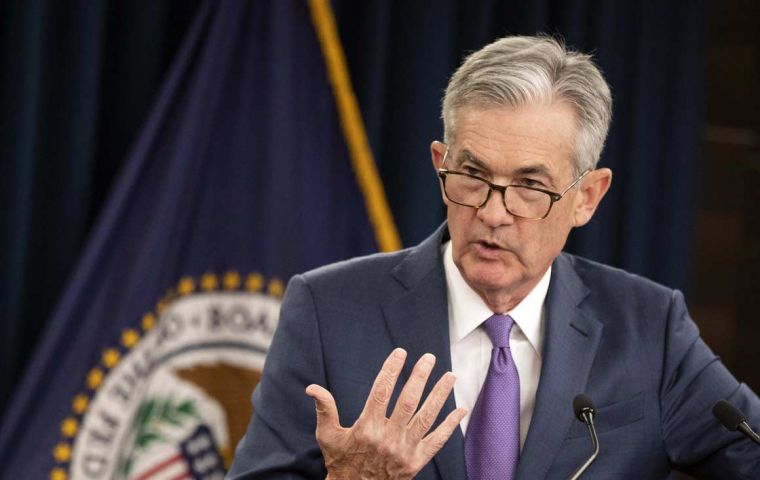MercoPress. South Atlantic News Agency
Fed raises interest rates by 50 points to 4,5%, but US inflation at 7,11% is still far from the 2% target
 Fed chairman Jerome Powell has described the job market as out of balance, with more job openings than there are available workers to fill them
Fed chairman Jerome Powell has described the job market as out of balance, with more job openings than there are available workers to fill them In a unanimous decision the United States Federal Reserve FOMC raised interest rates by half a percentage point on Wednesday, as it continues to battle a stubborn inflation, but the increase was lower than the three-quarter point which it had implemented seven times since last March, from zero to 4,5%.
While Wednesday's rate hike was smaller than the previous four, officials say the central bank is no less committed to bringing prices under control. On average, Fed policymakers now expect their benchmark rate to reach 5.1% next year — up from 4.6% they were projecting in September.
After hitting a four-decade high of 9% in June, inflation is showing some signs of easing. Gasoline prices have fallen sharply, and so have the prices of certain goods such as used cars and televisions. Rents continue to climb, but Fed officials believe the worst of shelter inflation may be behind. Increases in market rents have slowed since spring.
US inflation rate at 7.11% in November, has improved compared to 7.75% last month, and 6.81% last year, but is still distant from the 2% Fed longterm target. The biggest concern now is the rising price of services, which is primarily driven by the cost of labor. Services other than housing and energy account for nearly a quarter of all consumer spending.
With a tight job market, wages have been climbing rapidly. While that's good for workers, it tends to stoke the flames of inflation.
Fed chairman Jerome Powell has described the job market as out of balance, with more job openings than there are available workers to fill them. While the U.S. economy has now replaced all of the jobs that were lost during the pandemic, the share of adults who are working or looking for work has not fully recovered.
Many older workers who retired in the last two years may not return to the job market. With the supply of workers constrained, the Fed is trying to restore balance by tamping down demand.
Higher borrowing costs make it more expensive to get a car loan, buy a house, or carry a balance on a credit card. That's already curbing demand in some of the more sensitive parts of the economy, like the housing market.
While the vote to raise interest rates on Wednesday was unanimous, members of the Fed's rate-setting committee showed less agreement about where borrowing costs will go in the future. Some expect the Fed's benchmark rate will need to top 5.5% next year, while others believe a smaller increase will be needed to restore price stability.




Top Comments
Disclaimer & comment rulesCommenting for this story is now closed.
If you have a Facebook account, become a fan and comment on our Facebook Page!